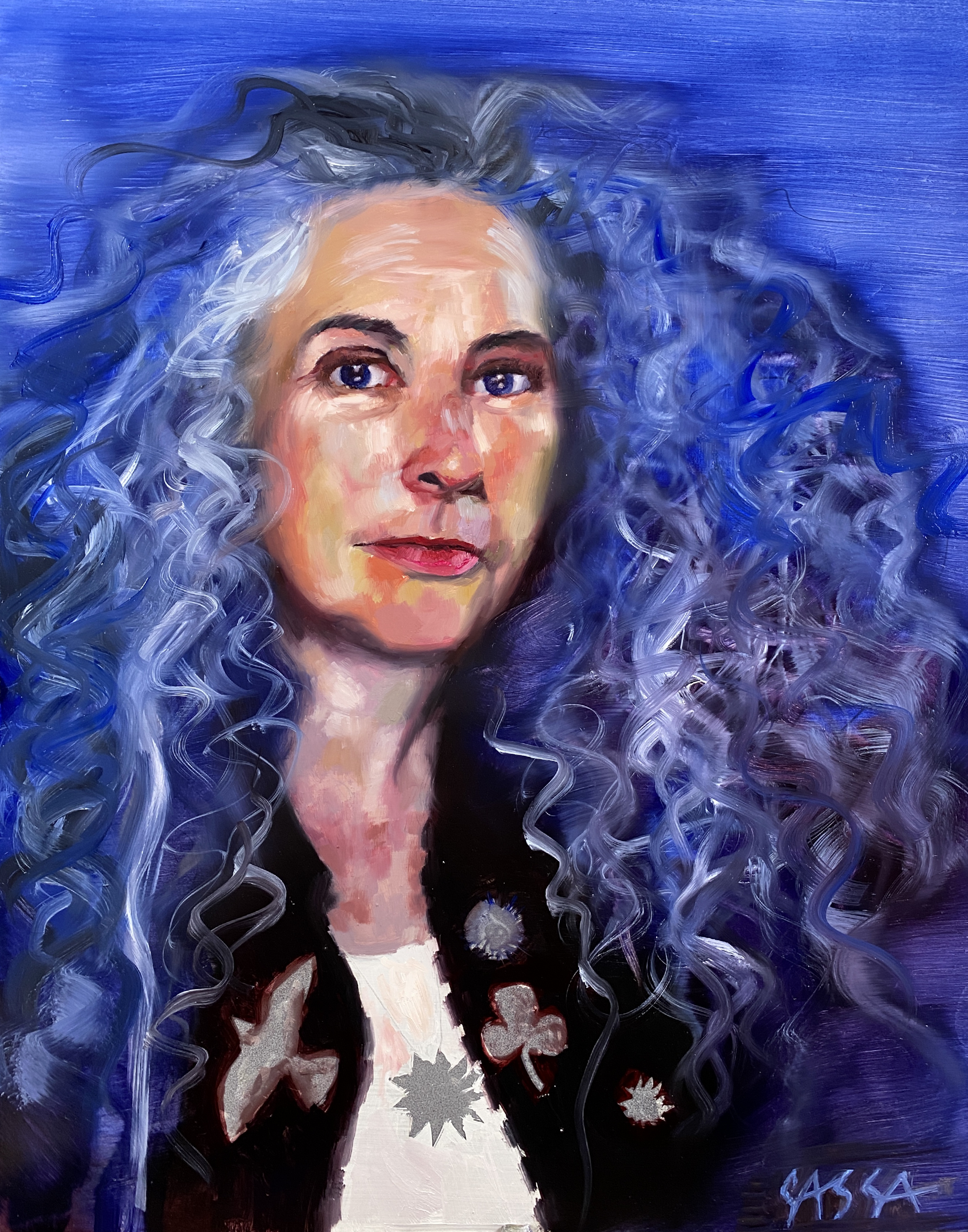kiki smith
Born 1954 (66 years old)
“Making art is a lot about just seeing what happens when you put some energy into something”
Kiki Smith was my first true artist love. She was the first artist I ever felt a strong connection to, the first to truly inspire me, and my college research paper about her was the first one I ever wrote that wasn’t completely full of shit. She’s been making art since the 70s, and her work is not always beautiful. Kiki lost a sister to AIDS in the 80s and made some work exploring death that was downright gruesome. She has worked in a ridiculous variety of media, from the most delicate hand-made papers to forged steel, and she has seen a level of success that is really difficult for a living artist to achieve.
Kiki Smith is also the first artist who really made me understand the importance of the artistic process. Not just the steps needed to get to an end goal, but the importance of being open to discovery and change while you work. When I look at super hyper-realistic art that can’t be distinguished from a photograph, I don’t look long. I feel impressed by the level of skill and focus that takes to complete, but to me work like that has no real depth of soul. I don’t want my work to look like a photograph. If I did, it would be a whole lot faster to just take a photo. I want it to have something extra, something more than just the physical representation. I want people looking at it to be able to see my hand in it, and easily imagine me making it. Mostly, I don’t want to be bored to death by my job. I want to be surprised by my own work, and the only way to do that is to get skilled up, and then let go. Relinquish control and let surprises happen. Spoiler: It is EVERY BIT as hard to learn to relinquish control of artwork as it is to relinquish control in more abstract ways. But it pays off in spades, and it is good practice for letting go of other things, too.
I think Kiki Smith is a child when she makes things. She seems to work in that beautifully innocent space of existence untainted by the harsh world, like a kindergartener scribbling away without fear. She’s curious and playful, using a TON of different media, following whatever idea or theme is of interest to her at the moment. As a teacher who often works with adults, I can tell you that it takes a very long time for most people to undo the damage the world does to our ability to play in this way. We are so conditioned to rank ourselves against each other and to think that time spent playing and being curious with no goal is wasted time.
Let me be your teacher for a moment and repay Kiki by passing along some of what she taught me. Here are some truths about art and creativity:
EVERYONE is creative. Thinking you aren’t is a learned belief that was imposed on you early on. You are creative.
EVERYONE is capable of learning to draw/paint/make art. It takes time and practice, like learning an instrument. There is no gene for it, and I will smack the taste out of the next mouth that tells me “My mom/brother/daughter can draw, but I can’t draw a stick figure…”
Making things is good for your soul in a way that nothing else is. It is a medicine for which there is no substitute, and since everyone is creative, everyone benefits from a creative outlet.
It doesn’t have to look like anything to be art. In fact, at first, it’s best if you just don’t even try. Get out some pencils and just make lines. Get a watercolor set and just make colors. Be curious about what happens when you try it different ways. Sew a thing. Decorate a room. Doodle. Journal with color.
Adults need creative play, too. We don’t outgrow the need for creative play, we just stop doing it. That’s probably why we can be such grumpy assholes. Play. Plant flowers. Draw in dirt. Stack rocks in a neat way. Look at the clouds. Make up a new recipe. Cut a bunch of colored paper shapes and glue them to something. Make a magazine collage. Challenge yourself to relinquish control and judgement. Draw without looking at your paper.
You can see Kiki Smith’s work here, and the videos I linked below are calming and inspiring.
Thank you, Kiki Smith.
